Detecting neural assemblies in calcium imaging data
- PMID: 30486809
- PMCID: PMC6262979
- DOI: 10.1186/s12915-018-0606-4
Detecting neural assemblies in calcium imaging data
Erratum in
-
Correction to: Detecting neural assemblies in calcium imaging data.BMC Biol. 2019 Mar 6;17(1):21. doi: 10.1186/s12915-019-0644-6. BMC Biol. 2019. PMID: 30841881 Free PMC article.
Abstract
Background: Activity in populations of neurons often takes the form of assemblies, where specific groups of neurons tend to activate at the same time. However, in calcium imaging data, reliably identifying these assemblies is a challenging problem, and the relative performance of different assembly-detection algorithms is unknown.
Results: To test the performance of several recently proposed assembly-detection algorithms, we first generated large surrogate datasets of calcium imaging data with predefined assembly structures and characterised the ability of the algorithms to recover known assemblies. The algorithms we tested are based on independent component analysis (ICA), principal component analysis (Promax), similarity analysis (CORE), singular value decomposition (SVD), graph theory (SGC), and frequent item set mining (FIM-X). When applied to the simulated data and tested against parameters such as array size, number of assemblies, assembly size and overlap, and signal strength, the SGC and ICA algorithms and a modified form of the Promax algorithm performed well, while PCA-Promax and FIM-X did less well, for instance, showing a strong dependence on the size of the neural array. Notably, we identified additional analyses that can improve their importance. Next, we applied the same algorithms to a dataset of activity in the zebrafish optic tectum evoked by simple visual stimuli, and found that the SGC algorithm recovered assemblies closest to the averaged responses.
Conclusions: Our findings suggest that the neural assemblies recovered from calcium imaging data can vary considerably with the choice of algorithm, but that some algorithms reliably perform better than others. This suggests that previous results using these algorithms may need to be reevaluated in this light.
Keywords: Clustering; Population coding; Spontaneous activity.
Conflict of interest statement
Ethics approval and consent to participate
All experiments were performed with approval from The University of Queensland Animal Ethics Committee.
Consent for publication
Not applicable.
Competing interests
The authors declare that they have no competing interests.
Publisher’s Note
Springer Nature remains neutral with regard to jurisdictional claims in published maps and institutional affiliations.
Figures
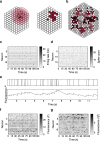

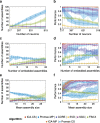
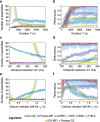
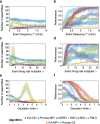
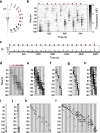
Similar articles
-
Emergence of spontaneous assembly activity in developing neural networks without afferent input.PLoS Comput Biol. 2018 Sep 28;14(9):e1006421. doi: 10.1371/journal.pcbi.1006421. eCollection 2018 Sep. PLoS Comput Biol. 2018. PMID: 30265665 Free PMC article.
-
Multivariate analysis of neuronal interactions in the generalized partial least squares framework: simulations and empirical studies.Neuroimage. 2003 Oct;20(2):625-42. doi: 10.1016/S1053-8119(03)00333-1. Neuroimage. 2003. PMID: 14568440
-
Finding neural assemblies with frequent item set mining.Front Neuroinform. 2013 May 31;7:9. doi: 10.3389/fninf.2013.00009. eCollection 2013. Front Neuroinform. 2013. PMID: 23755010 Free PMC article.
-
Detecting cell assemblies in large neuronal populations.J Neurosci Methods. 2013 Nov 15;220(2):149-66. doi: 10.1016/j.jneumeth.2013.04.010. Epub 2013 Apr 29. J Neurosci Methods. 2013. PMID: 23639919 Review.
-
Extracting functional networks with spatial independent component analysis: the role of dimensionality, reliability and aggregation scheme.Curr Opin Neurol. 2011 Aug;24(4):378-85. doi: 10.1097/WCO.0b013e32834897a5. Curr Opin Neurol. 2011. PMID: 21734575 Review.
Cited by
-
Recurrent network interactions explain tectal response variability and experience-dependent behavior.Elife. 2023 Mar 21;12:e78381. doi: 10.7554/eLife.78381. Elife. 2023. PMID: 36943029 Free PMC article.
-
Stimulus encoding by specific inactivation of cortical neurons.Nat Commun. 2024 Apr 12;15(1):3192. doi: 10.1038/s41467-024-47515-x. Nat Commun. 2024. PMID: 38609354 Free PMC article.
-
Generalization of generative model for neuronal ensemble inference method.PLoS One. 2023 Jun 27;18(6):e0287708. doi: 10.1371/journal.pone.0287708. eCollection 2023. PLoS One. 2023. PMID: 37368916 Free PMC article.
-
Hebb's Vision: The Structural Underpinnings of Hebbian Assemblies.bioRxiv [Preprint]. 2025 May 23:2025.04.24.649900. doi: 10.1101/2025.04.24.649900. bioRxiv. 2025. PMID: 40661630 Free PMC article. Preprint.
-
fmr1 Mutation Alters the Early Development of Sensory Coding and Hunting and Social Behaviors in Larval Zebrafish.J Neurosci. 2023 Feb 15;43(7):1211-1224. doi: 10.1523/JNEUROSCI.1721-22.2022. Epub 2023 Jan 3. J Neurosci. 2023. PMID: 36596699 Free PMC article.
References
Publication types
MeSH terms
Substances
LinkOut - more resources
Full Text Sources
Molecular Biology Databases
Miscellaneous

